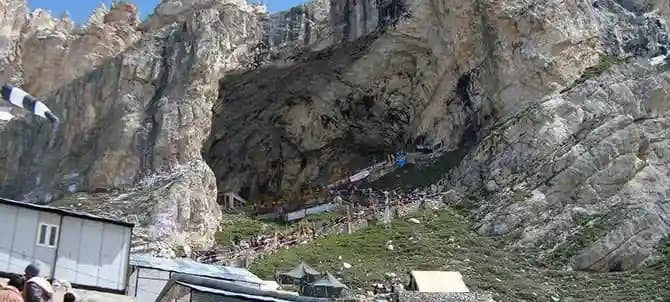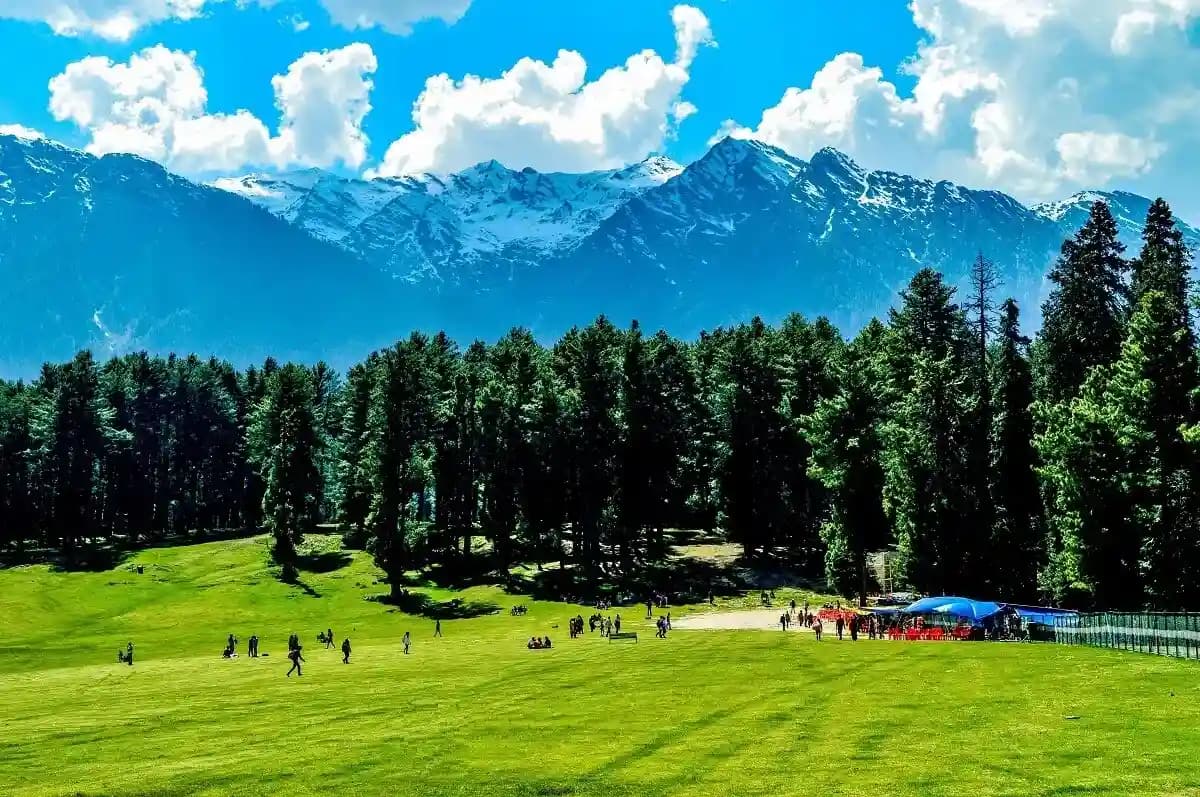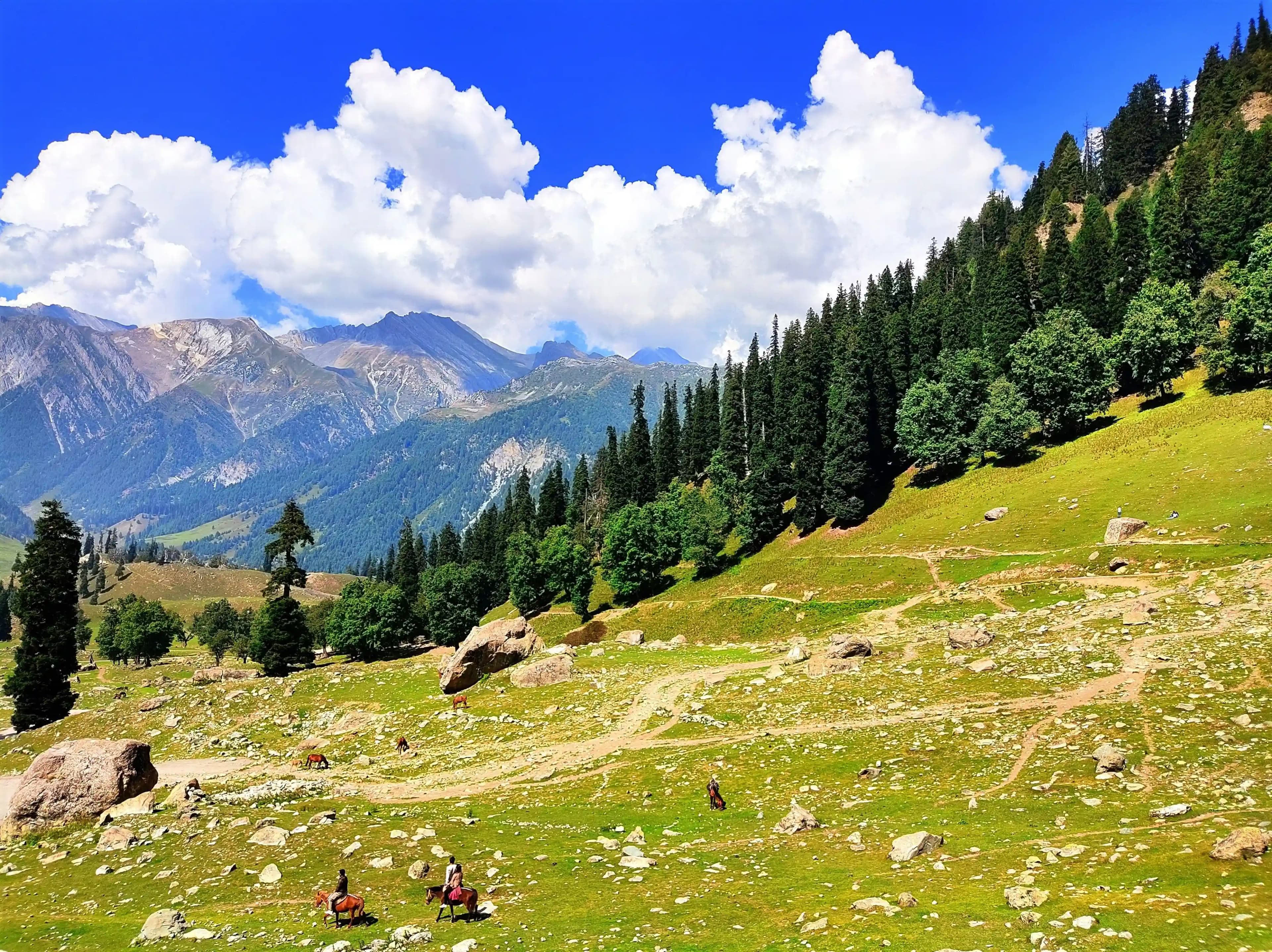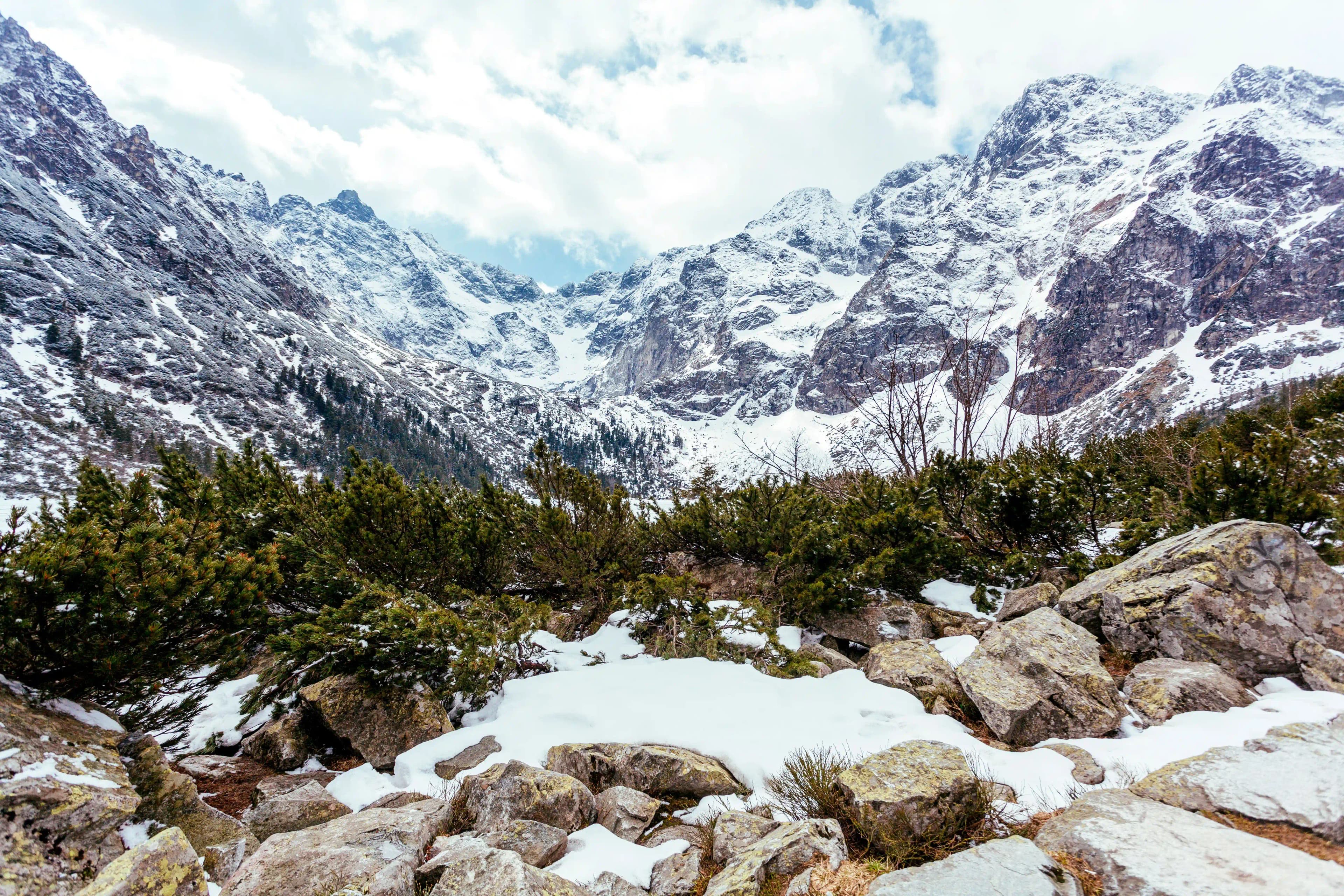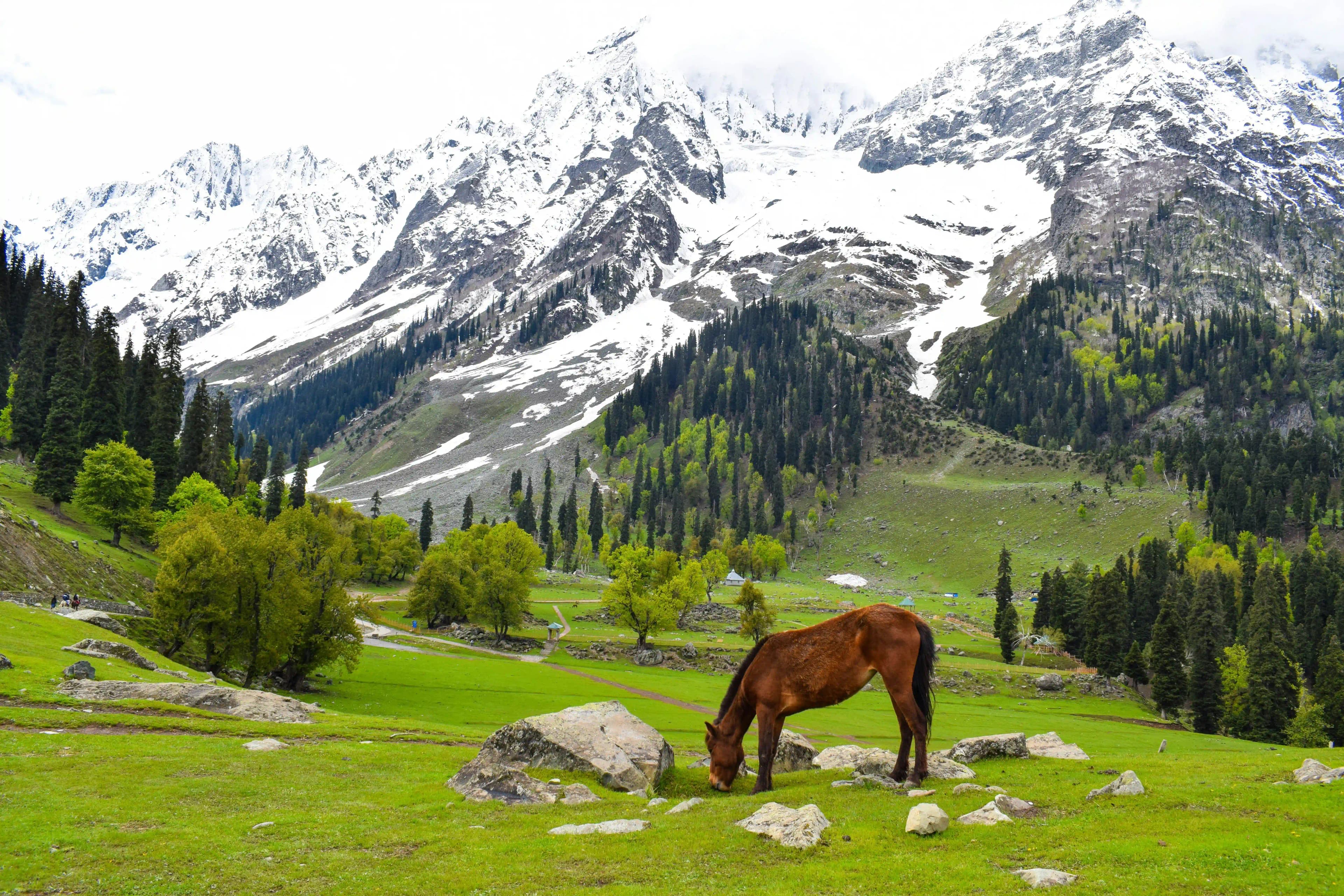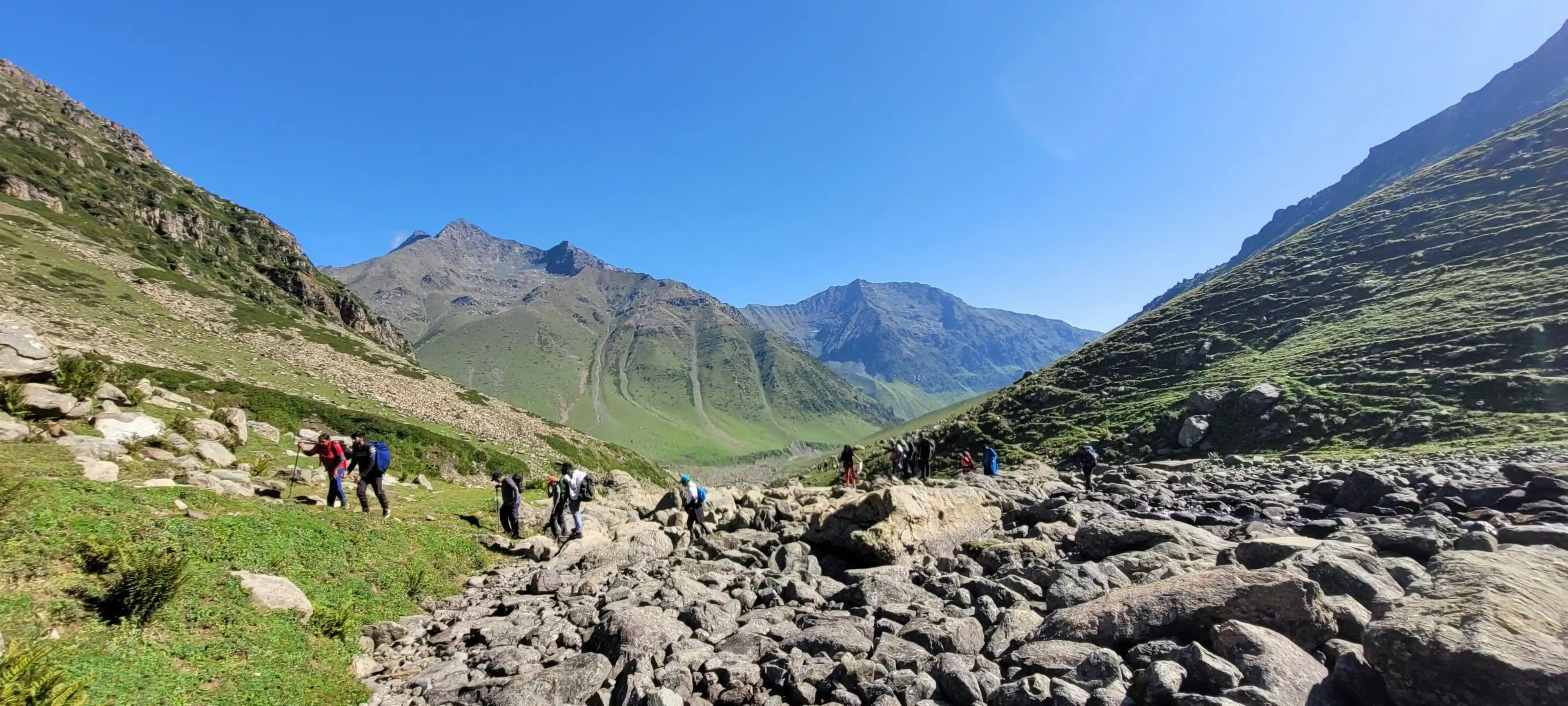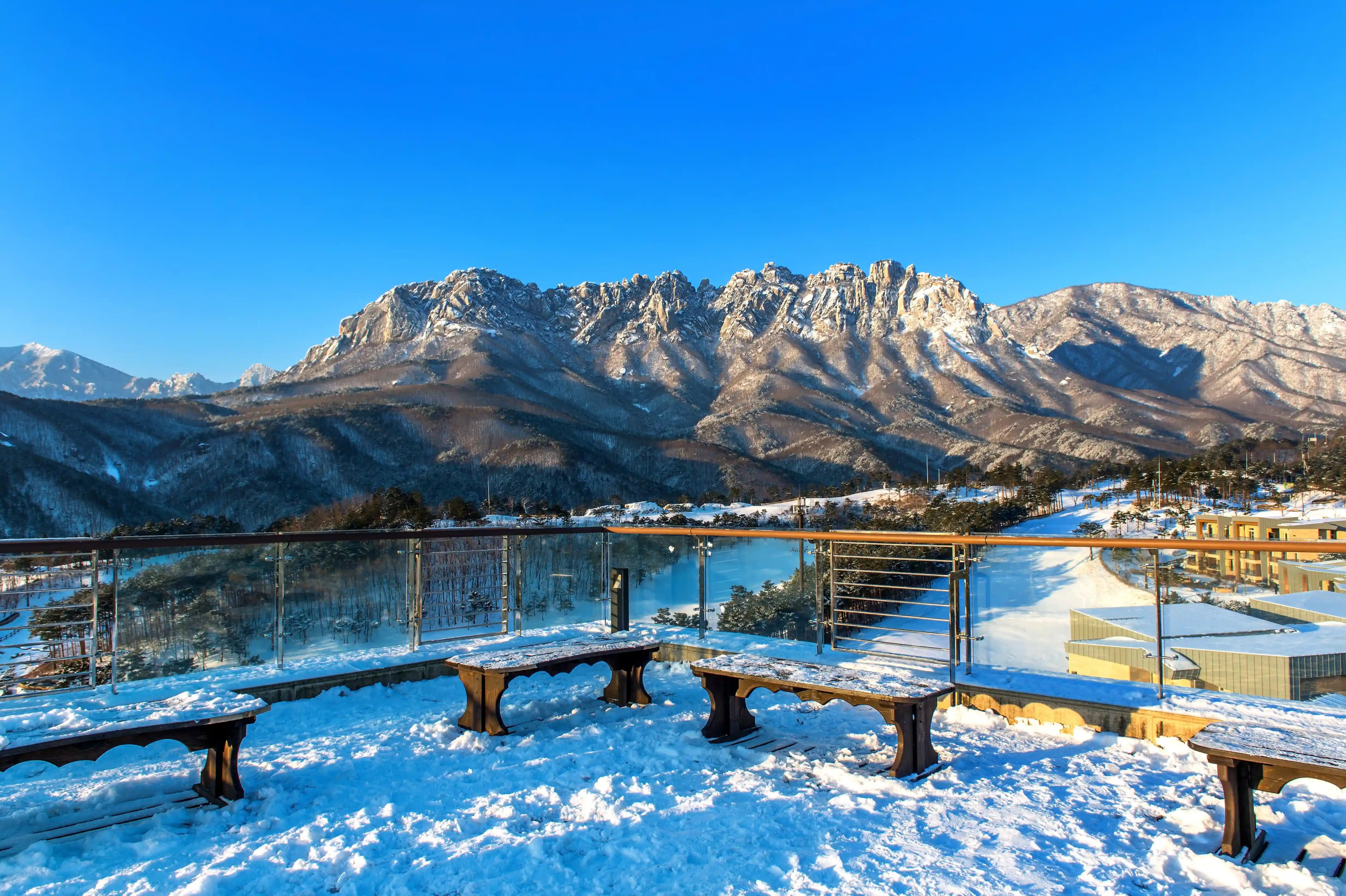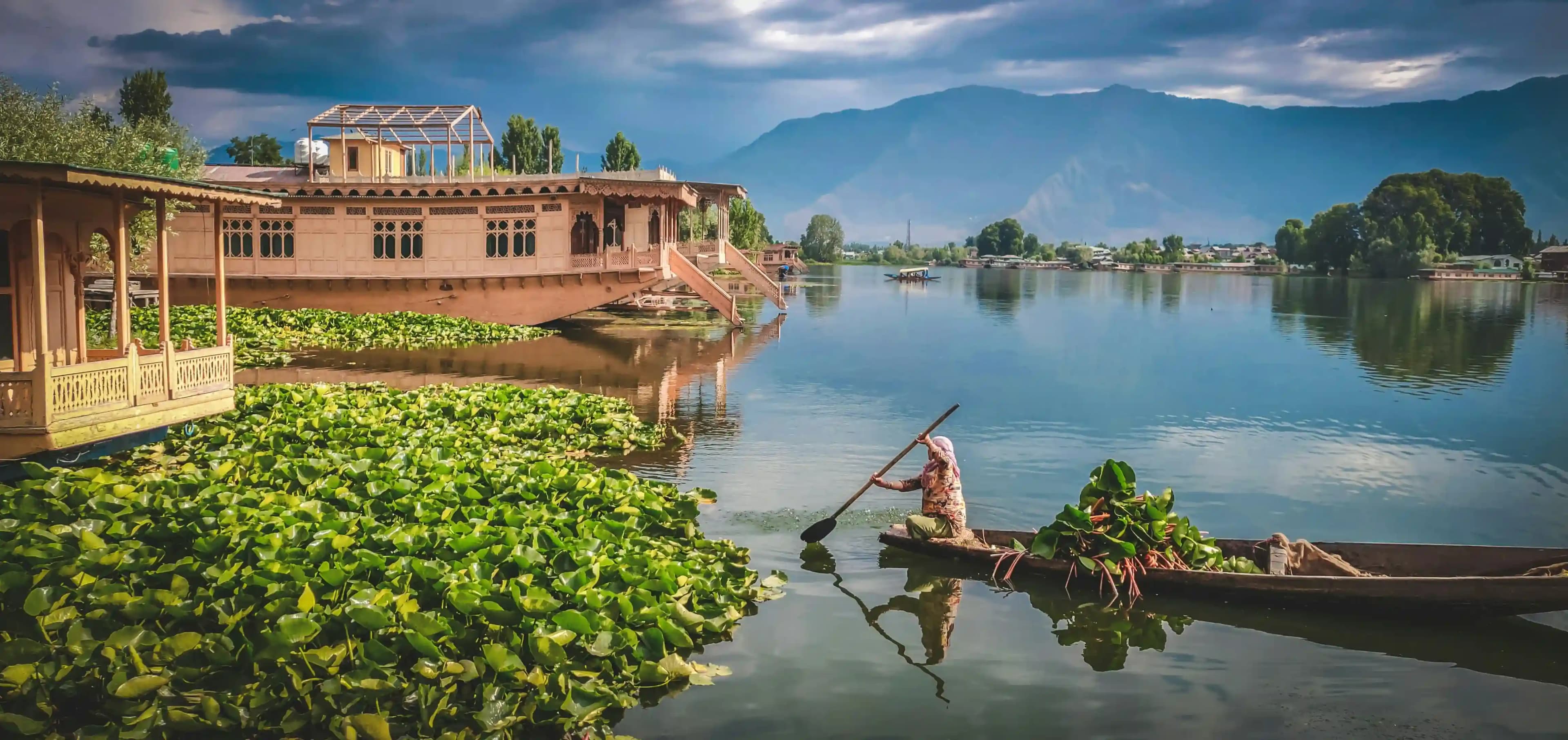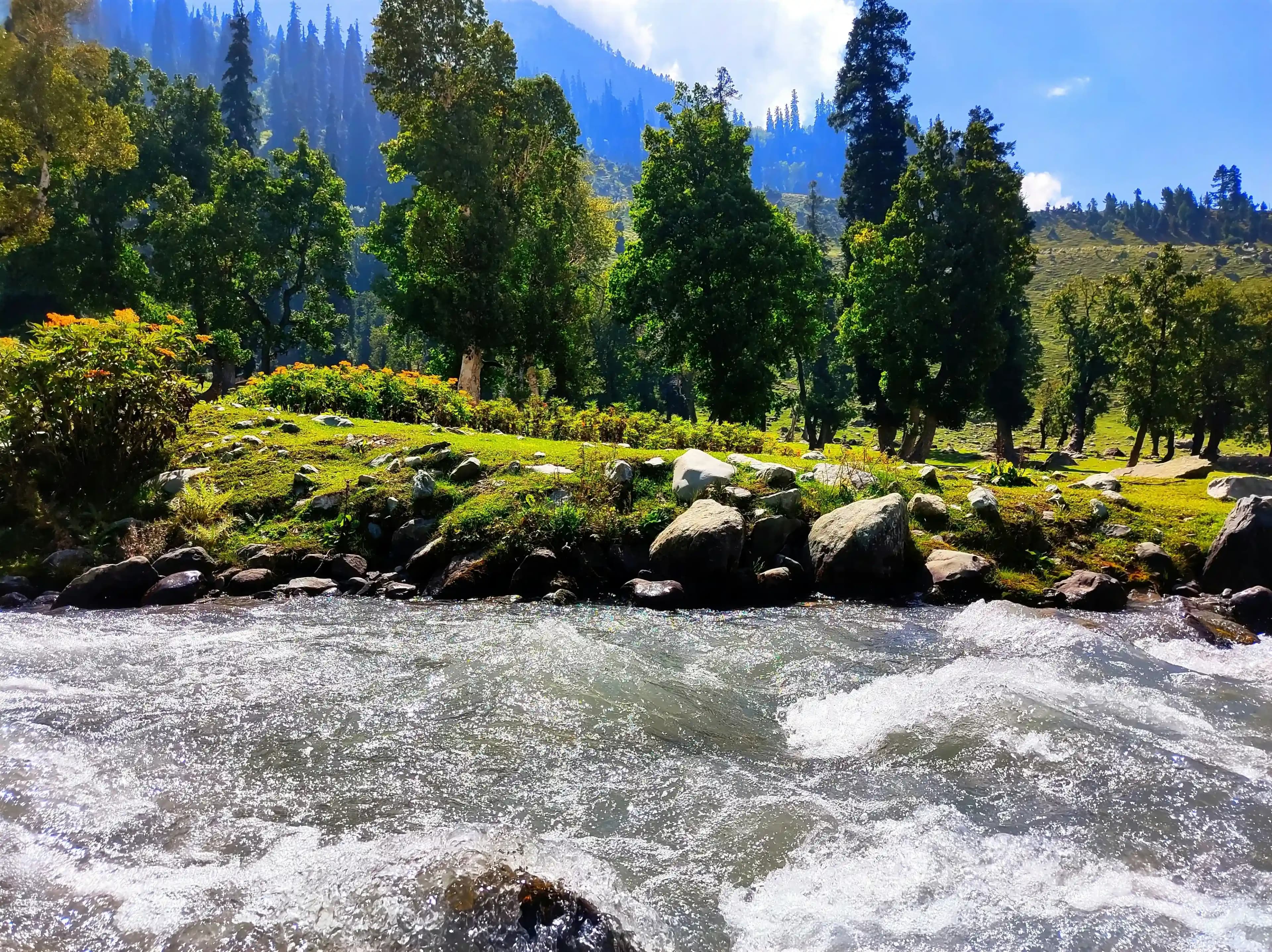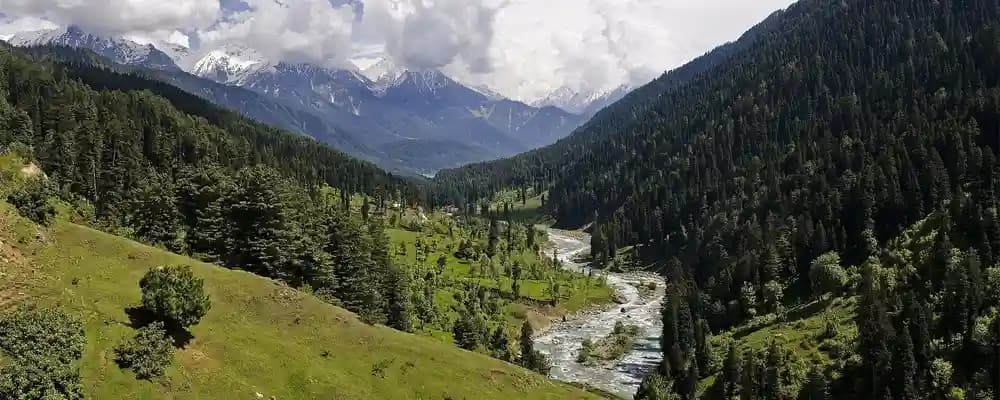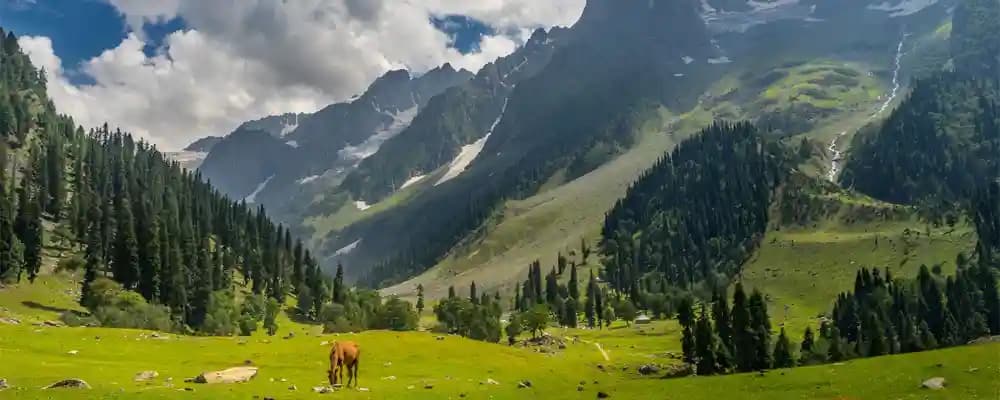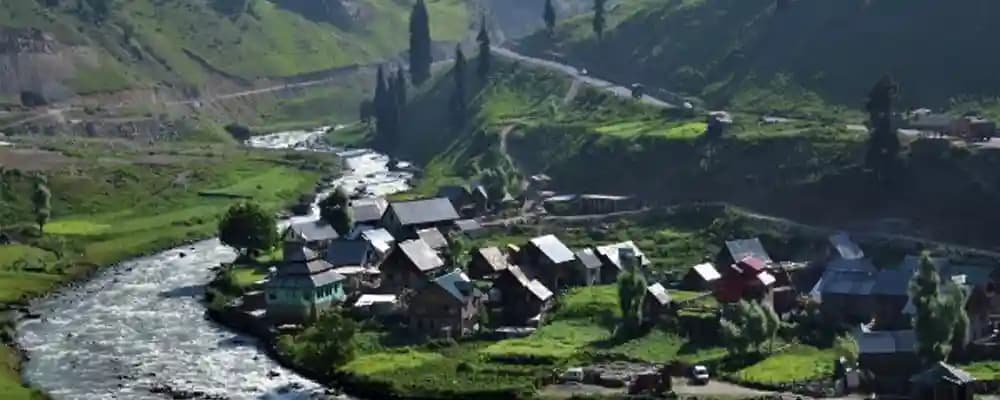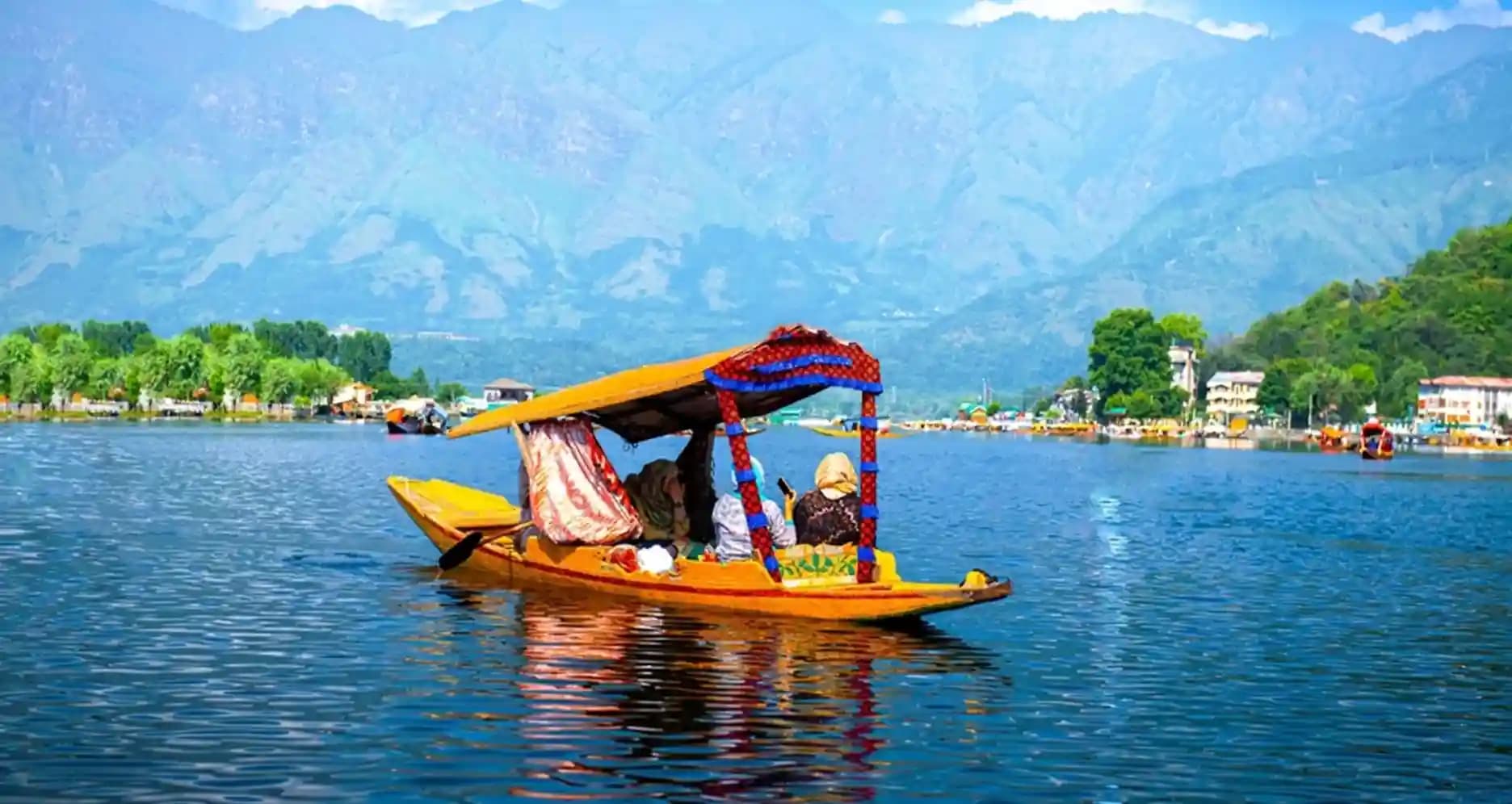Amarnath Cave Temple is one of the most desired pilgrimage tours for Hindus in India. If hopping on a spiritual adventure that takes you deep into the Himalayas is anywhere on your bucket list, then the holy Amarnath is the place to be! The magnificent sacred shrine is one of the holiest places in Indian mythology, with its revered Shivling that attracts lakhs of devotees every year. Today, the Amarnath Cave Temple is not just a place of worship but also an experience of faith, devotion, and nature’s wonders while magnifying the ultimate divine experience of this unique location in Jammu and Kashmir. With this blog, learn about its origin, primary features, trek details, main routes, travel tips, what to carry, and most importantly, how to make the most of your Kashmir Trip on your next getaway.
Amarnath Temple History

The Amarnath Cave Temple’s history is one of the most legendary mythological stories in Hindu dharma. It is mentioned in the main holy scripts like Mahabharata, Skanda Puran, Nilamata Purana, Amarnath Mahamatya, Bhringish Samhita, etc. The cave is believed to be the same cave where God Shiva narrated the story of the origination of the universe and the ultimate eternity to Maa Parvati. Both Lord Shiva and Maa Parvati are believed to be self-manifested in the form of Shivlinga and Yoni in the Amarnath Cave Temple.
Today, it is revered amongst the most aspired Chaar Dhaam Yatra, which is believed to be the ultimate path of getting liberation from all sins and gaining ultimate moksha once completed by a human. Over the years, millions of devotees have undertaken this journey, making it one of the most popular and sacred pilgrimage sites in India.
Suggested Read: Unveiling Mysterious Temples In India: Whispers Of Past
Amarnath Temple Location
Shree Amarnath Cave Temple is found in the Anantnag district of Jammu and Kashmir, India. It is nestled in the lap of the great Himalayas at a high altitude of about 12,756 feet above sea level. The temple is approximately 140 kilometres from Srinagar and about 46 kilometres from Pahalgam, one of the starting points and major routes of this pilgrimage along with Baltal.
6 Unique Features of the Amarnath Temple
Along with the main cave of Amarnath, here are some important yet informative features of the Amarnath temple to make you more aware before starting this ultimate journey of tourist and spiritual goodness.
1. Shivling & Other Ice Formations

The main highlight of the Shri Amarnath Cave Temple is the naturally occurring Ice Shivling. This stunning formation is believed to wax and wane with the moon cycle. The ice Shivling reaches its complete charm during the Shravan month and is considered highly auspicious for being Swayambhu (self-occurring). Alongside the main Shivling, the other two smaller ice formations are believed to represent Mata Parvati and Lord Ganesha.
2. Amarnath Cave Temple Legend

According to Hindu mythology, one Maa Parvati asked Lord Shiva the reason for wearing a ‘mund mala’ around his neck, to which Lord Shiva said the mundmala showcases the number of times Maa Parvati reincarnated; that is, each time Maa Parvati took birth, a mund was added to the mala. To this, Maa Parvati asked why she had to die again and again while God Shiva remained immortal. Lord Shiva asked her to hear the legendary Amar Katha to know about this. This is how Lord Shiva then started to find a quiet and isolated place where no one else could hear this secret of eternity.
For this, he chooses to sit in Amarnath's cave only to reveal the Amar Katha (secret of immortality) to Goddess Parvati. He ensured that no one else heard the story, so he left behind Nandi the bull (at Pahalgam), Chand (at Chandanwari), the snake (at Sheshnag), and his son Lord Ganesha (at Mahaguna Parvat). He even left the panch tatras at Panjtarni. Thereafter, he set the surroundings on fire before entering the cave of Amarnath with Maa Parvati alone so that no living being could hear the story. Then he started with the story narration, in which Maa Parvati fell asleep in between. By chance, a pair of pigeons heard the story, became immortal and are still believed to reside in the cave often seen by the pilgrims.
3. Religious Belief of Immortality

Devotees believe that visiting the temple and seeking blessing from the Shivling blesses them with ultimate liberation from the human life circle of birth and death (moksha) by rinsing off their sins on Shivling darshan. Moreover, the journey is also believed to be a journey of seeking inner peace, self-conscience, and spiritual divinity, for you will love the spiritual vibes of the temple amidst natural settings.
4. Accommodations and Food Options at Amarnath Temple

Government & Private Camps offer paid accommodation with basic facilities. Tents and Base Camps are available at major points like Pahalgam, Baltal, and other stops along the trek. Free Community Kitchens in the form of langars provide food to all pilgrims.
5. Prasad, Pooja, and Donations

Devotees seeking prasad, pooja, and donations can do so only online. Bookings for the same are to be made in advance, and no offerings or personal pooja can be performed at the main shrine. It is believed that putting bhasm and taking a bath at Amravati Sangam before going for the final darshan will get the complete blessings of the Amarnath Yatra.
6. Shri Amarnath Ji Shrine Board

Amarnath Temple is looked after by the Amarnath Cave Temple Shrine Board, which was constituted in 2000 and is chairperson by then Lieutenant Governor of the Jammu & Kashmir of the time. The board is responsible for proper performance, safety, development, worshipping arrangements, medical facilities for the pilgrims, and the management of the temple complex.
Suggested Read: Exploring Brahma Temples In India: A Journey To The Worship Places
Best Time to Visit Amarnath Cave Temple

The best time to visit is July or August, when the main Shivling cave is accessible as the Amarnath temple is open only during these months. However, the best time to visit Amarnath Cave Temple during its opening is mid-season which is in mid-July, when the weather conditions are suitable with warm days, less or no rainfall, and clear skies.
Temperature Range at Amarnath Temple
The holy shrine of the Amarnath Cave Temple lights up during July and August during Shravan at an impressive high altitude of 12,756 feet, making it one of the most challenging pilgrimage sites considering both accessibility and climatic conditions. The temperature remains moderate during the daytime, between 15°C to 20°C and the night witnesses freezing temperatures running 5°C to -7°C.
Suggested Read: Famous Temples In India
How to Reach Amarnath Cave Temple?
Reaching the Shree Amarnath Cave Temple is a wholesome journey full of adventures and spiritual vibes involving trekking and hiking. You will love the entire scenic ambience while enjoying your journey to self-conscience and inner peace. There are two main routes to reach the main temple:
1. Pahalgam Route

To start on this route, you need to first reach Pahalgam through Srinagar Airport or Jammu Tavi Railway Station, which are the nearest airport and railway station, respectively. Devotees have traditionally been using this route, one of the most popular routes via Pahalgam. This route is longer but easier. It is preferred by middle-aged or older devotees, as the route is longer giving time to trekkers to adapt to high-altitude conditions while moving up.
- Total Distance: 43 kilometres
- Duration: 4-5 days (on foot/horse/pony/palkies)
- Major Stops on the Route: Pahalgam (Nunwan) → Chandanwari → Sheshnag → Panchtarni → Amarnath Cave Temple
- Nearest Airport to Pahalgam: Srinagar Airport is the nearest and most popular airport distanced about 92 kilometres from Pahalgam. From the airport, you have various options like buses and cabs to reach Pahalgam.
- Nearest Railway to Pahalgam: Srinagar Railway Station (92 kilometres) and Jammu Tavi Railway Station (235 kilometres) are the nearest railway stations. From the railway stations, you can reach Pahalgam by car and public bus.
2. Baltal Route

To reach Baltal, you can choose either Srinagar Airport/Railway Station or Jammu Tavi Railway Station. The Baltal route is steeper than the Pahalgam one and more challenging, but it is faster and preferred by younger, physically fit pilgrims for it being shorter too. Most pilgrims look at it as a quick trekking adventure.
- Total Distance: 14 kilometres
- Duration: 1-2 days (on foot/horse/pony/palkies)
- Major Stops on the Route: Baltal (Sonamarg) → Domail → Barari → Sangam → Amarnath Cave Temple
- Nearest Airport to Baltal: The nearest and most popular airport would be Srinagar Airport which is about 95 kilometres and is accessible by frequent buses and cabs.
- Nearest Railway Station to Baltal: Srinagar Railway Station (95 kilometres) and Jammu Tavi Railway Station (340 kilometres) are the most popular and reachable railway routes near Baltal. After reaching the railway station, you can reach Baltal by bus and car.
3. Helicopter

For ease and for those who cannot trek, helicopter services from Baltal and Pahalgam to Panchtarni are available. From there, the temple is only 6 kilometres of trekking.
Suggested Read: Khajuraho Temples: Your Unlimited 2025 Guide
Amarnath Cave Temple Darshan Timing
The Shri Amarnath Yatra starts annually during the Shravan month between July and August. The temple is open annually only for 40-60 days for pilgrims' access.
Amarnath Temple Timing: Amarnath cave temple is open from 6:00 AM to 4:00 PM during the yatra for Darshan by the visitors. The gates to Domel and Chandanwari Access Control start from 5:30 AM to 11:00 AM.
Registration Process for Amarnath Yatra
Online as well as offline registrations are mandatory and can be done via the Shri Amarnath Shrine Board (SASB) main website. A Compulsory Health Certificate (CHC) is required to ensure fitness for the high-altitude trek. Registered pilgrims are given a Yatra Permit or RFID card with a fixed date and route that has to be continuously kept while embarking and seeking the Amarnath Yatra.
Suggested Read: Bhimashankar Temple
Dos and Don’ts for Safe Amarnath Yatra

Here are some mandatory tips to be followed while you go on the journey to the Amarnath Cave temple.
1. Continuously wear your RFID card or Yatra Card, which is given after you present your Aadhar Card to registered locations/centres in Jammu and Kashmir.
2. Do carry a valid Compulsory Health Certificate issued by authorized medical practitioners.
3. Follow an exercise routine a month before the main Yatra like 3-4 kilometres of walking, controlled and deep breathing, and drinking at least 5 litres of water regularly.
4. Keep your belongings, like clothes and eatables in a suitable waterproof backpack with a refillable water bottle.
5. Put your identification card handy along with a note bearing your name, address, and mobile phone number of a co-Yatri with the date on which you start your trek.
6. Take up BSNL, Jio, or Airtel post-paid sim as only those will function in the Yatra. However, you can also get local pre-paid sims at base camps.
7. Try to wear comfortable clothes and footwear suitable for long trekking.
8. Don’t leave the queue or marked path, especially those marked by warnings. Also, don’t look for any shortcuts in between treks.
9. Don’t litter or pollute the surroundings.
10. Don’t start the Yatra empty stomach and there are free langars throughout the journey, so no need to carry bulk food, water, or snacks.
Things to Carry for the Amarnath Yatra
The Amarnath Cave Temple trek is not only physically demanding but might also be mentally challenging, considering the weather and terrain conditions. But with proper preparation and travel essentials, you can complete this challenge with ease and comfort. Here’s what you might need:
1. Use a walking stick for support
2. Identification Card and Yatra’s RFID Card/Permit
3. Compulsory Health Card by a registered Doctor
4. Warm clothes (temperatures drop drastically at night)
5. Sturdy trekking shoes
6. Raincoat or poncho (weather is unpredictable and of rainfall)
7. Woollen gloves, caps, and thermal wear
8. Torch with extra batteries
9. Dry fruits and high-energy snacks
10. Personal first aid kit and essential medicines
11. Postpaid SIM Card
Suggested Read: 14 Must-Visit Temples in Vizag
4 Places to Visit Near Amarnath Temple
The whole valley of the Amarnath Cave temple and its surroundings are full of natural richness and panoramic views. From the starting point at base camps to the main temple, the journey is something to look up to, but there are some other amazing places to visit near the Amarnath temple, especially when you have spare time on hand:
1. Sheshnag Lake

The ultimate freshwater lake at the hilltop is believed to have been created by the serpent King Sheshnag himself. It is one of the most famous attractions in the Kashmir valley today.
- Distance from Amarnath: 13 kilometres
- Things to do: Panoramic views, Trekking, Camping
2. Thajiwas Glacier

This glacier in Sonamarg can be your ultimate location for spotting silvery snow nestled amid the lush green flora. The views of the frozen lakes and mother nature give the perfect setup for amazing activities.
- Distance from Amarnath: 23 kilometres
- Things to do: Trekking, Ice Sledging, Camping, Pony ride
3. Zojila Pass

As one of the highest motorable passes and an ambitious project of the Indian government, Zojila Pass serves as an amazing place for tourism near Amarnath Temple with a touch of adventure mixed in.
- Distance from Amarnath: 26 kilometres
- Things to do: Traverse the Road path, do Adventure sports, and visit the nearby attractions like Zero Point, war memorials, etc
4. Sangam Point

One of the major highlights of the valley and the Amarnath Temple is this point of convergence of the rivers Amravati and Panchtarni. It is believed to be a sacred place to take a dip before going for the blessings of the main Shivling at Amarnath.
- Distance from Amarnath: 2 kilometres
- Things to do: Holy dip, Trekking, Nature walk, Photography
So, you would have understood by now that Shri Amarnath Cave Temple is a lot more than just a pilgrimage; it’s a journey of faith, endurance, spirituality, and devotion. Whatever your reason might be to visit this holy site, for spiritual reasons or adventure, the experience is gonna be a lifetime experience leaving a lasting impact. The breathtaking beauty, the challenging trek, and the divine aura of the Amarnath Cave Temple make it one of the most cherished experiences for devotees and travellers alike. So, if you are planning a trip, make sure to go prepared and embrace this divine journey with an open heart!
Frequently Asked Questions
1. Where is the Amarnath Cave Temple located?
Amarnath Cave Temple is located in the Anantnag district of Jammu and Kashmir amidst the beautiful scenery of Mount Amarnath.
2. Why did Shiva go to Amarnath?
Lord Shiva went to Amarnath to narrate the legendary story of Amar Katha to Maa Parvati. The story is very sacred and secret, which is why God Shiva needed utmost calm and no intrusion, the reason he chose this highly situated Amarnath cave to maintain the secrecy of this pious Katha.
3. How much is a helicopter ticket in Amarnath?
A helicopter ticket in Amarnath will largely depend on your choice of route as these are available from Srinagar, Pahalgam, and Baltal. For shorter routes, it will cost you 7000 to 10000 per person for a roundtrip, while for a longer distanced route like from Srinagar, it will cost you 20000 to 25000 per person for a roundtrip.
4. What is special about Amarnath Temple?
Everything about Amarnath Temple is special including the ice Shivling, the spiritual yet adventurous trek, the scenic backdrop and surroundings, and of course the mythological legend of its formation.
5. Is there any age limit for visiting the Amarnath Cave Temple?
Yes, children below 13 years, adults above 70 years, and women pregnant for over 6 months are not allowed on the Yatra due to the extreme conditions and high altitude.
6. Are medical facilities available during the Amarnath Yatra?
Yes, medical camps and emergency services are set up all along the Yatra route at a distance of every 2 kilometres. However, it’s advised to carry your medicines and consult a doctor before undertaking the journey apart from the health formalities included in the Yatra registration.
